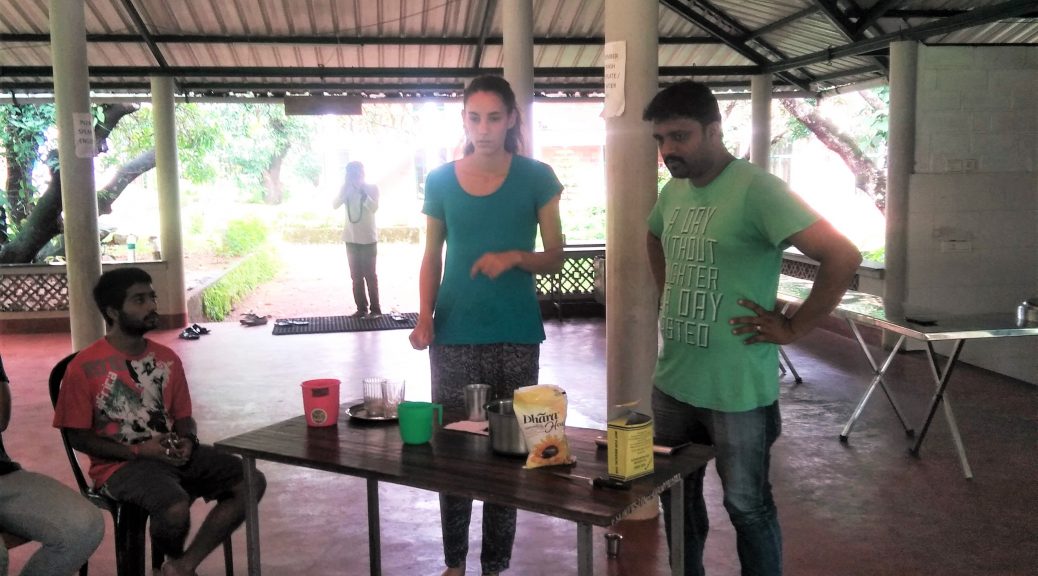
Self-made Soap at CEL!

Hi everyone… greetings from Kundapur! We bring you new updates on our experiments at the Centre for Experiential Living. This time, it’s all about how to make home-made soap.
Making soap is easier than one might think. All that is needed is fat, oil or wax, NaOH Sodium Hydroxide (NaOH) and water. Instead, one might also use Potasssium Hydroxide (KOH), which will give liquid soap. To make solid soap you first need to mix the NaOH with the water. It is important to use a glass beaker for this, for it might react with other materials. Furthermore, this should only be done in well ventilated rooms because some of the lye will evaporate due to the heat released during the reaction of the NaOH with the water.

To mix this with the fats and oils, it is necessary that these are liquid, so if using any solid fats, these might melt while the NaOH is cooling down. Soap can be made out of every fat, which one may also mix. Yet, you need to be careful to get the right amount of NaOH, which depends on the type of fat used.
To find the right amount, there are online soap calculators. It also depends on the type of soap to be made. For hand-washing soap, less NaOH is required, so that the soap keeps some of the fat and does not dry out the skin. For washing dishes and clothes, there should be less fat left and therefore, a little more NaOH is required.

To mix the lye and the fat properly, it is best to use an electric mixer, since we need to get air to the mixture. When the soap starts to thicken after about 3 minutes, it can be filled into bowls or bottle-bottoms to cool down and get hard. Once it is hard enough to be taken out of the bowl, it has to ripen for around 2-3 weeks before it can be used.
The advantage of this soap is that it does not contain any artificial colouring, perfumes or preservatives. While using normal soap, all these chemicals will go into the soil or water, especially damaging the water organisms, and will end up in the food chain.

Soap free of preservatives, on the other hand, will simply rot and can be reused by the ecosystem. Moreover, using self-made soap will create much less waste, which is also good for the environment. This is because we will be making use of used oils or fats, so it means re-using damaging elements in order to save the environment.
These are some of the reasons why we have started our self-made soap in CEL. The plan is to create as much as required, in order to wash, at least, our hands, plates and clothes in an organic way.
We are still working on it so please, if you have any idea to make us become more sustainable and eco-friendly, let us hear from you.
We are still working on it so please, if you have any idea to make us become more sustainable and eco-friendly, let us hear from you.
